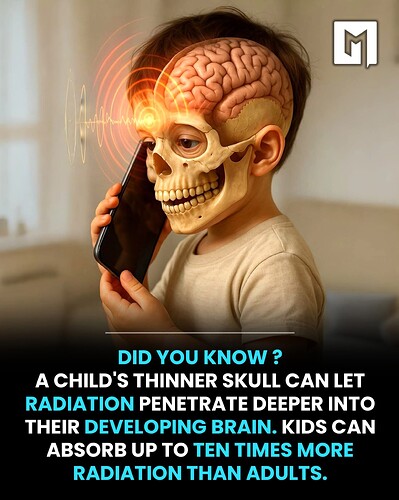New research from the University of Utah, reveals that a child’s thinner, underdeveloped skull allows significantly more radiation from wireless devices like smartphones and tablets to penetrate the brain compared to adults.
Experts found that children’s skulls, with less bone density and higher water content, absorb up to 60% more radiofrequency electromagnetic fields (RF-EMF) into developing neural tissue, a stark contrast to adults’ thicker cranial protection.
This heightened vulnerability, tied to early and prolonged screen time, raises concerns about potential disruptions to sleep, concentration, and long-term cognitive development, though conclusive links await further study—current data suggests correlations but not causation, with ongoing trials tracking 500 children.
The establishment emphasizes awareness over alarm, advocating practical steps like using speakerphone, limiting device proximity, and enforcing digital breaks to reduce exposure.
While RF-EMF safety standards (e.g., FCC’s 1.6 W/kg limit) are deemed adequate by regulators, skepticism persists—some experts argue these thresholds, set decades ago, may undervalue pediatric risks, especially with daily use averaging 4-6 hours for kids.
This science-driven call for caution highlights a need to balance tech benefits with protective habits for growing minds, pending more definitive evidence.
